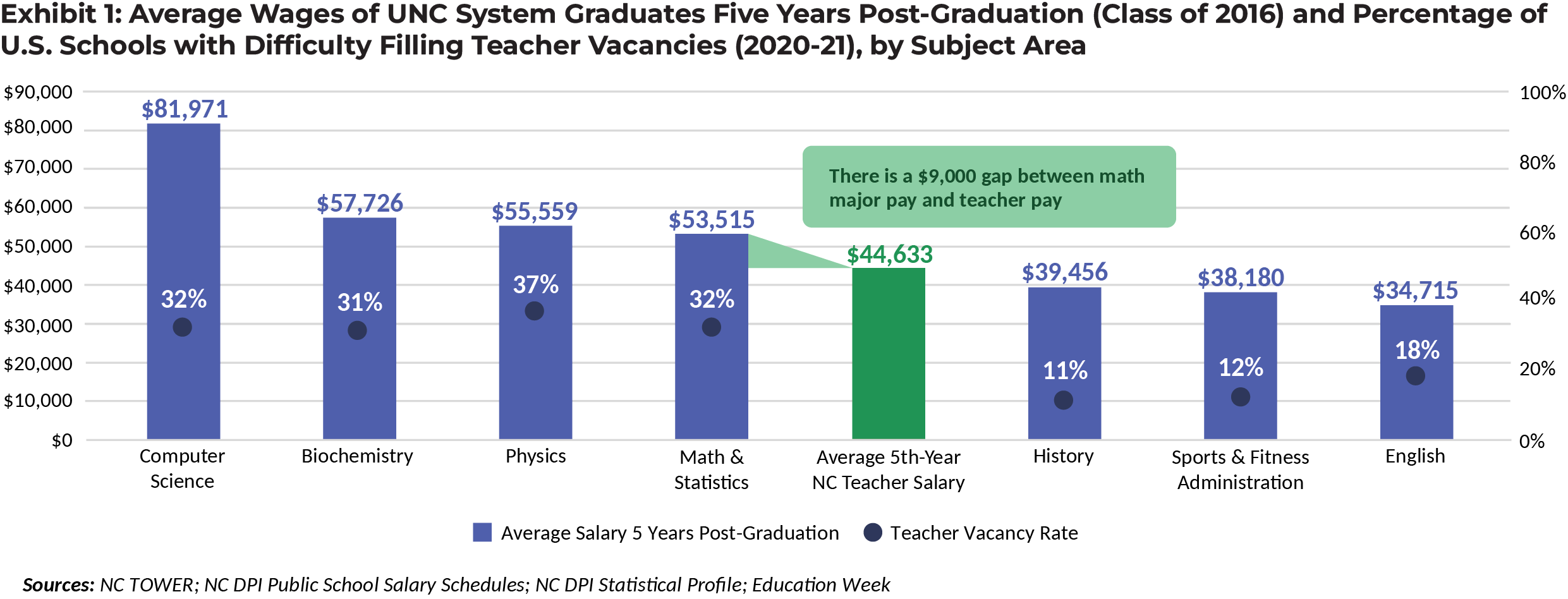Best Practices in Teacher Pay: Differentiated Pay for Hard-to-Staff Subjects
A comprehensive, professional compensation plan includes layered pay strategies that build on one another to ensure the recruitment and retention of a high-quality workforce. This is the eighth in a series of blogs highlighting best practices in teacher pay featured in detail in BEST NC’s report, Teacher Pay in North Carolina: A Smart Investment in Student Achievement.
The previous blog in our teacher pay series summarized research supporting the use of differentiated pay models to increase student access to highly effective teaches in hard-to-staff schools. This blog explores the potential for differentiated pay to do the same in hard-to-staff subject areas.
The traditional step-and-lane teacher salary schedule, used in North Carolina and in most other states, pays teachers on two main factors: years of experience and level of education. While this pay structure creates a sense of objectivity and fairness, there is a notable disconnect between the uniform teacher pay structure and the wide variation in market demand for specific skills. For example, certain college degrees, specifically those in STEM subjects, yield higher salaries in the market, while the teaching profession rarely pays more for this high-demand expertise. Given that pay levels and pay parity matter when choosing a career, this disparity likely reduces the supply of STEM teachers, resulting in the higher vacancies we see in these subject areas.
A recent examination of the most valuable college majors shows that average income levels of STEM majors like physics and computer science can be over $80,000 just five years after graduation, while majors like history, English, and the arts have median income levels in the $40,000 range. The exhibit below examines this in detail for recent UNC System graduates in key subject areas, and shows the national vacancy rates for teaching positions in related subject areas.

Note: The average teacher salary estimate is likely an overestimate because it factors in the average local salary supplement, not the actual. Local salary supplements are often higher for teachers with more years of experience.
Compare a teacher candidate with a STEM degree to a teacher candidate with a degree in history. Labor market forces provide candidates with a STEM background with significantly higher earnings potential over other degrees. With higher-paid professional options open to them, these graduates appear to be less apt to accept a teaching position. Researchers have confirmed that this at least partially explains the higher vacancy rates in subjects taught by STEM-educated candidates, to the detriment of schools being able to fill positions in STEM subjects.
As with differentiated pay for hard-to staff schools, evidence suggests that differentiated pay for hard-to-staff subjects is an effective tool for recruiting and retaining effective teachers. This is an important tool to address elevated vacancy rates in subjects that are traditionally difficult to fill, such as STEM and special education.



